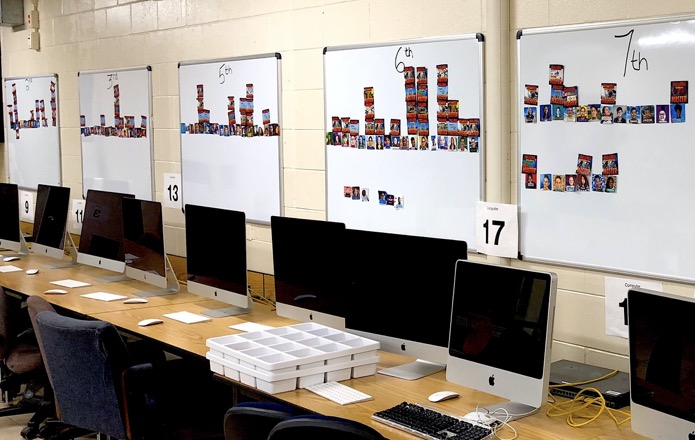MakerSpace & FUSEStudio Badging Initiative Goals
- Recognize Focused Efforts
- Inspire Goal Setting
- Encourage Persistance
- Identify Experienced Peers (adults can enlist to mentor co-learners)
- Bolster Self-Image
- Visually Record Accomplishments
The particular class that I am trying this badging exercise with is a
MakerSpace-themed class. MakerSpaces are typically like user groups or clubs that members voluntarily go to meet other DIY (do it yourself) people. They often rent a warehouse, lease a space in a strip mall or have libraries, universities, museums, or high-tech industries sponsor them. MakerSpaces take on many unique flavors depending on the interests of the hobbyists and professionals – they often focus on particular technologies such as robotics, programming, rapid fabrication tools (3D printers or subtractive 3D CNC machines), etc.
We call this class
Making IT With STEAM (Science, Technology, Engineering, Arts, Math) and the students first project was to make an avatar using a green screen photo and a great graphics editing program:
Acorn. One of the commitments that I made as an instructor is to give the students as much choice as possible - in keeping with the MakerSpace philosophy, this is interest driven curriculum. Students have the choice of many different
Challenges that range from Computer Aided Drawing (CAD) to Music Composition. This year we received a grant and became affiliated with Northwestern Universitiy's
FUSEStudio - which added an additional 26 high interest challenges to our pool of choices for the students. The 5 sections of 120 students in all can select any challenge that they want to pursue and the introductory lessons are fashioned into game-like levels. Students are not graded on how correctly they make stuff, they have no homework, quizzes, tests or exams. Even though there are clearly very rich opportunities to obtain deep understandings, factual knowledge and specialized technical skills, students are not all doing the same thing at the same time and may develop strong competencies in one specific area and never really address another area. The bulk of their grade each quarter is based on participating - trying.
Even though completion of a particular challenge is commendable and shows focus, persistence and skill attainment, a student may never complete all the levels of a challenge and still demonstrate depth, creativity and extension of the prescribed activity in a fashion not anticipated by Northwestern Universities FUSEStudio developers or myself as the MakerSpace facilitator. As a facilitator, I rarely provide lectures or run large group demonstrations, because there is such a diversity of interests. Although I may make some suggestions, help the students formulate good questions or search queries when troubleshooting, the goal is to help the students become independent learners or learn from their peers as opposed to relying on a supervisor or teacher as the a sole source of knowledge in the classroom.

To this end, I have set up magnetic badging boards for each of my classes and begun to recognize my MakerSpace managers as well as badges for those students who have persevered through individual challenges. My hope is to enhance our learning culture by celebrating one measure of persistence, creativity, focus, and growth.
This year I created my badges using images from the FUSEStudio website http://fusestudio.net and other imagery for local challenges. I built the badges in ArtText and printed them a Numbers (spreadsheet) grid on a color laser printer. Students cut them out and used magnet tape to attach the to the magnetic white boards:





Overall, this badging exercise has been a real positive for my classes's winter curriculum blues. Students have gone back and taken a look to see why they hadn't gotten a badge yet on projects that were closed to completing. Students have been fascinated to see who is in other sections of my classes and what they have accomplished. And if students get stuck on a challenge they can see who has finished the challenge and get help from them. It has really broken down some of the barriers and helped us all to learn names and skills from each other. There has been quite a bit of chatter and new challenges started. And after this trial run this year, the students are quite excited to be able to take these badges home for their family refrigerator!
Next year I will have make some new badges that are not so rectangular and I plan to print them with as stickers (using
StickerMule Custom Stickers) that the students can take at the end of the year and stick on their skateboard, bedroom door, laptop, etc:

Send me an email if you want some print ready designs for the badges I used this year.
Tags: branding, gamification, gamify, motivation, accountablity, achievement


















